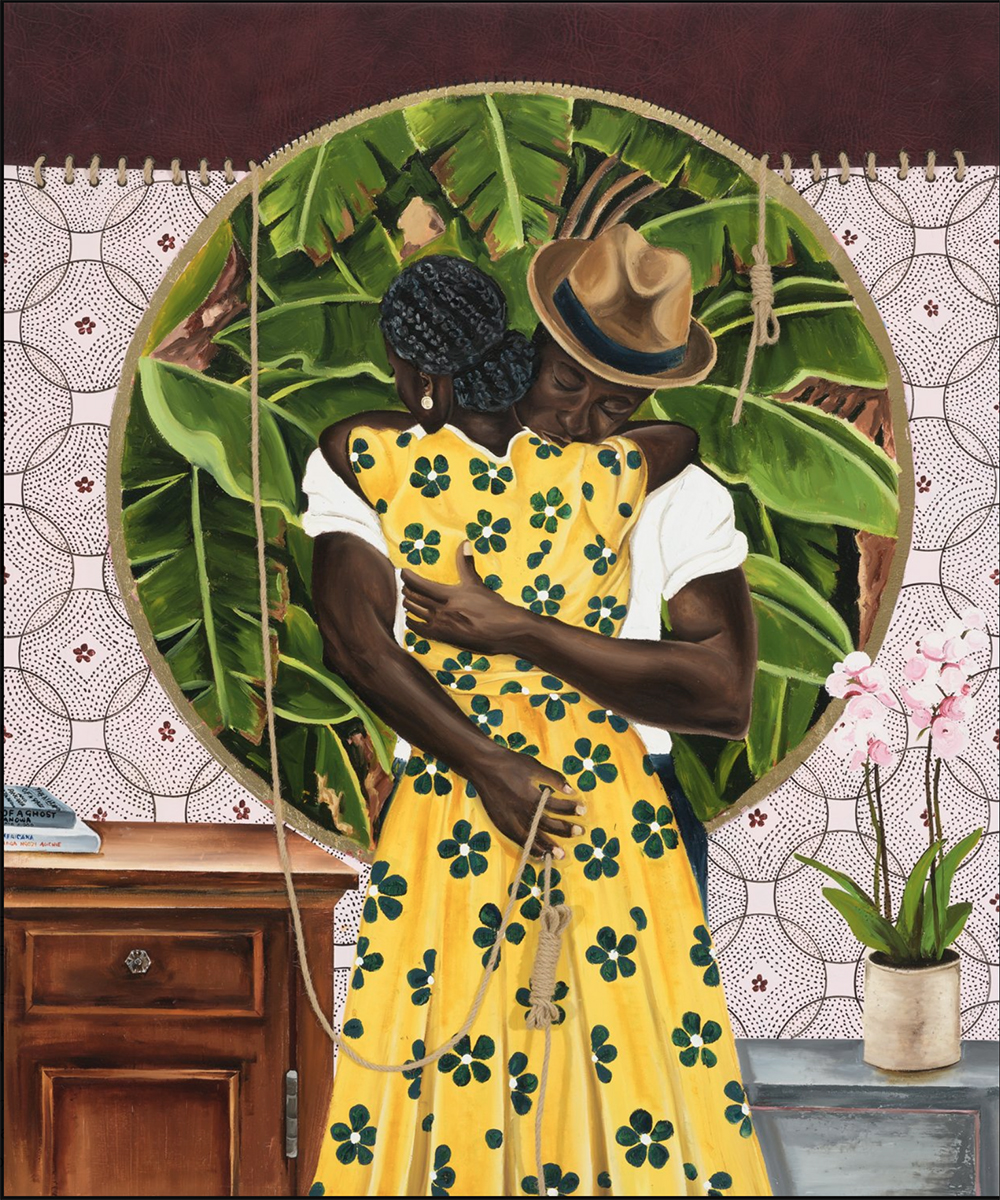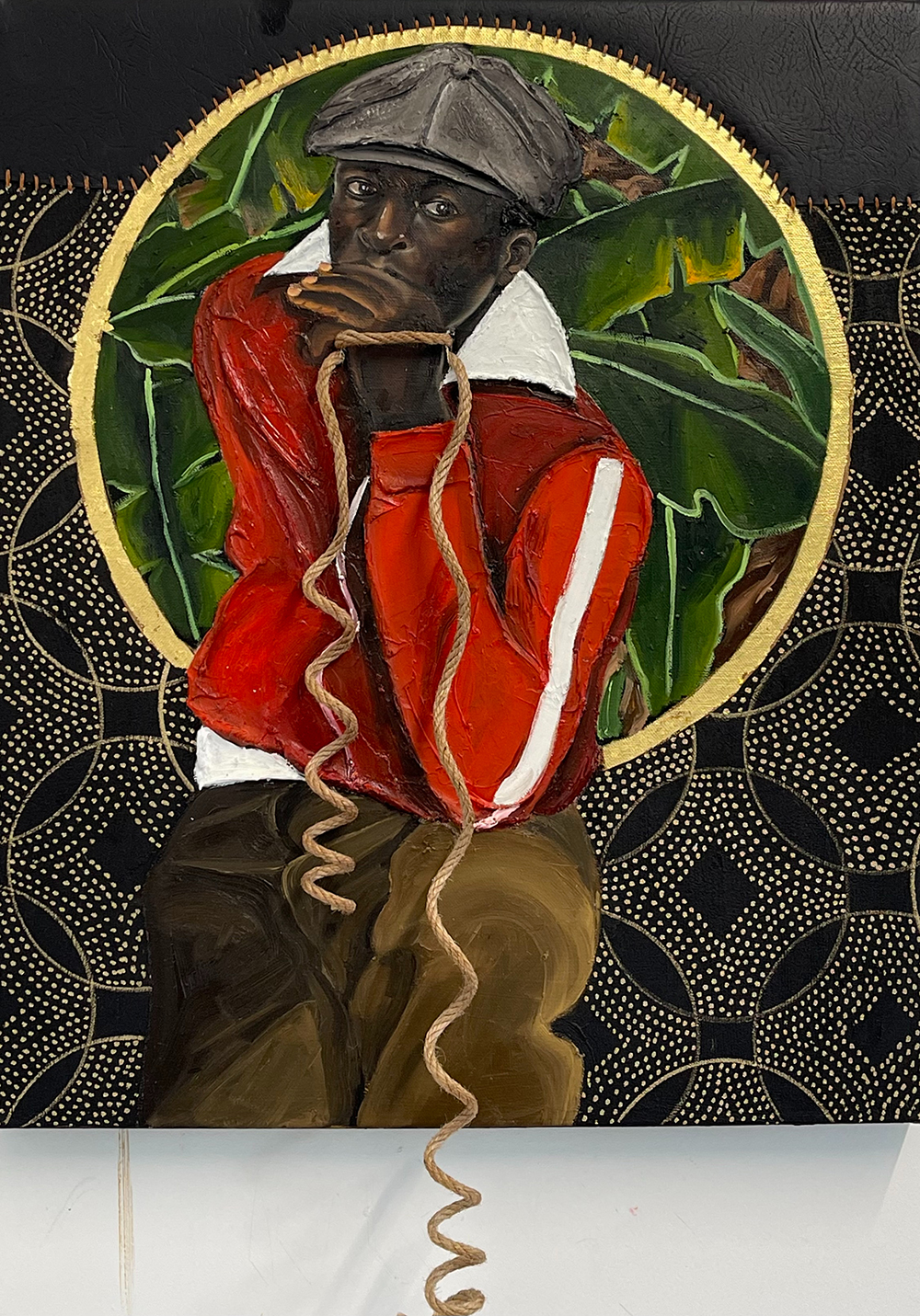When writer and poet Peter J. Harris wrote in his poem Only Wine (2004): Blessed be the laughter of lovers for it separates the edges of the future / bless me with your laughter, Blessed be the music of lovers for it spices the taste of all creation / bless me with your music, he testified to what continues to be absent from media’s news broadcasting of African-American life: Black love and the joy emanating from it. Richard Mensah’s figurative works give physical impact to Harris’ words through his exhibition, “Tangled Embrace.” In works that combine oil and acrylic painting with faux leather, jute rope, gold leaf and marble dust, Mensah speaks unapologetically to the uninterrupted sacred space where chocolate visceral connectedness is cultivated through the act of tender touch and fearless embrace. Even his paintings depicting only one person suggest that self-love rooted in contagious confidence is the best antidote to infectious negative narratives.
For example, Locked In (2023), whose circular interior frame is echoed throughout the exhibition, shows two lovers sur- rounded by a halo of celebratory, Jolly-Rancher-neon green leaves. The brotha king sports a ginger–ale hued yellow brimmed hat; a soul queen reclines nearby, reaching to touch his arm as it sinuously boa-constricts around and down her caramel shoulder. Their eyes speak of contentment and commitment. The use of jute rope suggests a twined swirling journey. Mensah’s portrayal of affection between a Black couple invokes Jacob Lawrence’s The Lovers (1946) or Autumn of the Rooster (1983) by Romare Bearden.

Richard Mensah, Embrace, 2023. Courtesy Band of Vices.
By contrast, Mensah’s Young King II (2023) portrays a teenage warrior whose ivory-trimmed shirt complements his coffee-hued skin, his eyes weighing all options and possible outcomes. In his hands, the jute braid suggests less entwinement than the choices he holds and considers. The confidence reflected in his posture seems to augur his future—as a leader, committed family man and effective mentor. Moreover, the intentional portrayal of this man provides an alternative positive, discourse pertaining to the future of Black males, much like Kehinde Wiley’s Portrait of Oluranti Olaose II (2023)—both portraits of which, in their own way, cast their subjects as the heroes of their narratives, and reiterate the themes of strength, directness and dignity that the AFRICOBRA movement emphasized.
Ultimately, these works shatter prevalent and insidious stereotypes about people of color. To be sure, this A Free I Can artist visually narrates stories that should be. As Charlie Parker once said, “Hear with your eyes and see with your ears.”


